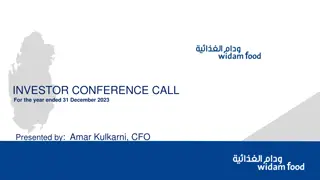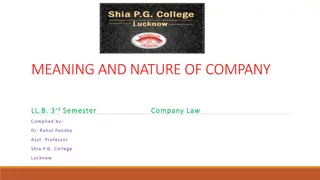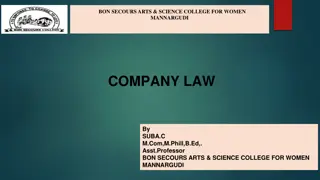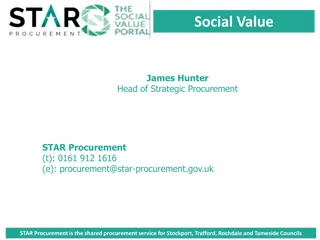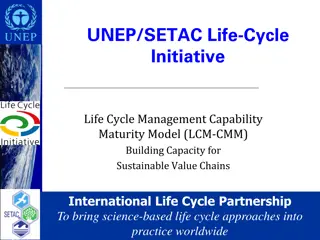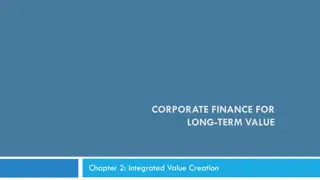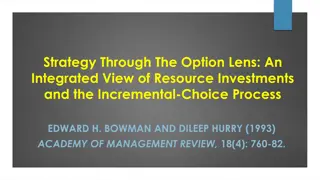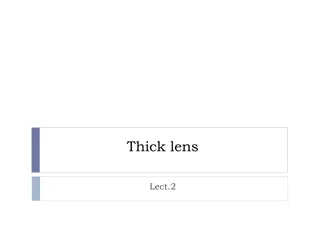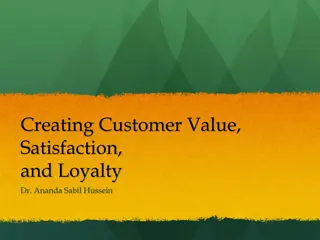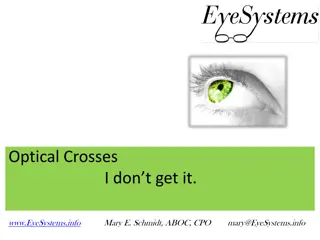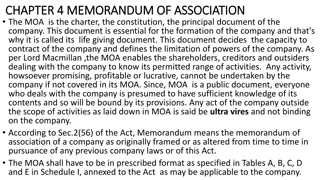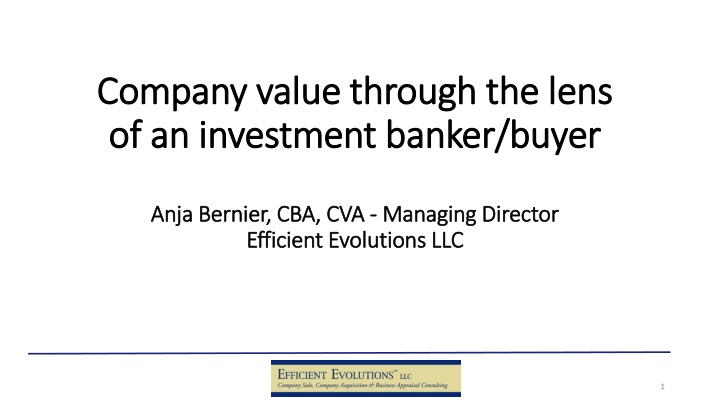
Company Value Through the Lens of an Investment Banker
Explore the key aspects of company valuation and acquisition from the perspective of an investment banker, including buyer types, value drivers, and diversification strategies. Gain insights into what acquirers look for and how to maximize your company's value in the market.
Download Presentation

Please find below an Image/Link to download the presentation.
The content on the website is provided AS IS for your information and personal use only. It may not be sold, licensed, or shared on other websites without obtaining consent from the author. If you encounter any issues during the download, it is possible that the publisher has removed the file from their server.
You are allowed to download the files provided on this website for personal or commercial use, subject to the condition that they are used lawfully. All files are the property of their respective owners.
The content on the website is provided AS IS for your information and personal use only. It may not be sold, licensed, or shared on other websites without obtaining consent from the author.
E N D
Presentation Transcript
Company value through the lens Company value through the lens of an investment of an investment banker/buyer banker/buyer Anja Bernier, CBA, CVA Anja Bernier, CBA, CVA - - Managing Director Efficient Evolutions LLC Efficient Evolutions LLC Managing Director 1
Agenda 1. Buyer Types 2. Key Value Drivers 3. Offering Memorandum 4. LOI 5. Due Diligence 2
Buyer types 1. Strategic Buyers Typically don t buy companies with less than 750,000 EBITDA What exactly are they after? Revenue? Diversification? IP Synergies? 2. Private Equity/Family Offices Typically don t buy companies with less than $1 million EBITDA Involvement/Management of company 3. Individual Buyers Can rarely afford to buy the kind of company they are pursuing
Beauty is in the eye of the beholder Every acquirer has different views and priorities What is a deal breaker for one, can be insignificant to another It can make sense to have several versions of an Offering Memorandum Talking to just one potential acquirer essentially guarantees a lower sale price Why pay more, if you know you have no competition?!
Key Value Drivers 1. Customer Diversification 2. Recurring Revenue Streams 3. Being a big fish in a small pond 4. Know-how is spread across people 5. Positive profit (margin) trend 6. Getting organized/literally cleaning house
Customer Diversification No customer should account for > 10% of revenues Top 3 customers combined should be <20% of revenues Tie large customers to company Incentives Barriers Diversify across industries and geographies
Customer Diversification - Examples Printing company: free plates for multi-year contracts Inventory Management System Airline Industry and 9/11 The Great Recession
Recurring Revenue Streams Multi-Year Contracts Auto-Renewals Sunk money subscriptions/consumables Service contracts Check for Assignment Clauses!
Recurring Revenue Streams - Examples Multi-Year Contracts: Comcast Auto-Renewals: Most online subscriptions (www.dividends.com) Sunk money subscriptions/consumables: Gillette & razors, HP & ink, security monitoring, cloud storage Service contracts: optical instruments
Being a big fish in a small pond Be a known and substantial entity within a defined market Strategic acquirers go after known experts first Better to be #1 in a small market segment than #10 in a large one (ozone measuring company) Have defined expertise and diversify/broaden customer and revenue base across industries Proprietary know-how and connections (Mueller: patents & Pepsi)
Spread Know-How Key asset of the company should NOT be the business owner Litmus test: will the company skip a significant beat if the owner would get hit by a bus tomorrow? Buyers are concerned about cooperation of seller during transition period Know-how, vendor and customer relationships need to be spread across multiple people (the more the better) Golden Handcuffs
Positive Profit Margin Trend No matter the reason, a negative profit margin trend will result in a lower sale price $6 million revenues with $1.2 million profit (20%) is more attractive than $7.5 million revenues with $900K profit (12%) Reduce discretionary earnings 2-3 years before sale Profit focused sale incentives programs
Getting Organized/Literally Cleaning House Nobody wants to buy a mess Organize/clean-up financials and filing systems Remove offensive posters/screen savers etc. DOL postings Dismiss problematic employees Clean-up / settle law suits
Company Value is all about deal terms There is NOTHING hypothetical about the buyer and seller Its an emotional process for both sides, and a lot of decisions are thus not based on logic or facts Many buyers offer what they can afford Many sellers ask what they need Almost all small companies sell in asset based transactions All liabilities, and all current assets are typically excluded Most deals involve financing = Essentially no company ever sells at Fair Market Value
Offering Memorandum At least 10-15 pages Strategic Buyers: facts & figures focus Individual Buyers: storytelling Disclose Issues Leaving information out will provide buyer with ammunition to renegotiate terms during due diligence
LOI Be as detailed as possible Financing Structure How much at closing? Seller financing? Terms? Earnout? Benchmarks Transition period
Due Diligence Makes or breaks the deal The more information the buyer had before signing the LOI, the less reasons he has to renegotiate Disclose what you are being asked for but don t provide additional information Time is the enemy of every deal Anticipate potential questions and concerns Prepare key employees Golden Handcuffs
Questions? Anja Bernier CBA, CVA Office: 781 806 0880 Email: abernier@efficientevolutions.com




